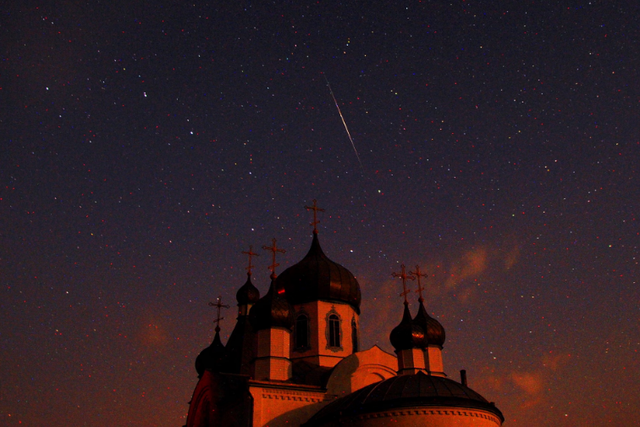Ready for the meteor shower tonight? The Perseids reach their peak at midnight on August 12
- Korca Boom
- Aug 12
- 2 min read
It’s time for stargazers to enjoy what is considered to be one of the best meteor showers of the year.
The Perseids are expected to reach their peak on the night of August 12, although they have been active since mid-July and will continue to be visible for several more weeks.
This annual event, most visible in the Northern Hemisphere, occurs as comet debris burns up in Earth’s atmosphere.
“Each year, Earth passes through material shed by an ancient celestial body, Comet 109P/Swift-Tuttle, which is estimated to be over 5 billion years old older even than Earth itself,” said Dr. Richard Parker, an astrophysicist at the University of Sheffield.
He noted that the comet visits the inner solar system every 133 years and will make its closest approach to Earth in 2126.
“It’s worth mentioning that the comet is the largest object to pass close to Earth but fortunately, it is not expected to approach dangerously for thousands of years,” Parker added.
The Perseids occur because the debris left behind by the comet remains in space.
“Since we orbit the Sun year after year, we keep running into it at the same time and from the same direction,” said Dr. Ed Bloomer, an astronomer at the Royal Observatory in Greenwich.
“So, from our point of view, standing on Earth, it looks as if the Perseids come from the same part of the sky every year.”
This radiant appears to be in the constellation Perseus—thus giving the meteor shower its name.
Perseus is currently visible in the northeastern sky. But for the best chance of spotting meteors, Bloomer said it’s worth facing east-southeast, looking toward Saturn, or more to the north, toward the constellation Ursa Major.
“To maximize your chances, if you turn slightly away from Perseus, you’re more likely to catch them out of the corner of your eye,” he said, noting that dim light conditions make it easier to see with peripheral vision.
With the peak occurring just a few days after the full moon, experts have warned that the faintest meteors may be harder to see this year.
Bloomer advised going out late at night to the darkest location possible, with as clear a horizon as you can find, and waiting up to 30 minutes for your eyes to adjust.
He recommended watching with friends, but noted that individual meteors can flare for only a second or even less.
“It’s one of those things where you can’t turn to the person next to you, tap them on the shoulder, and try to make them look at the same part of the sky. It’s already gone,” he said.
“So, in a way, it’s quite a solitary thing, because you just have to sit there with your eyes open and that’s it.”
“KORÇA BOOM”



















